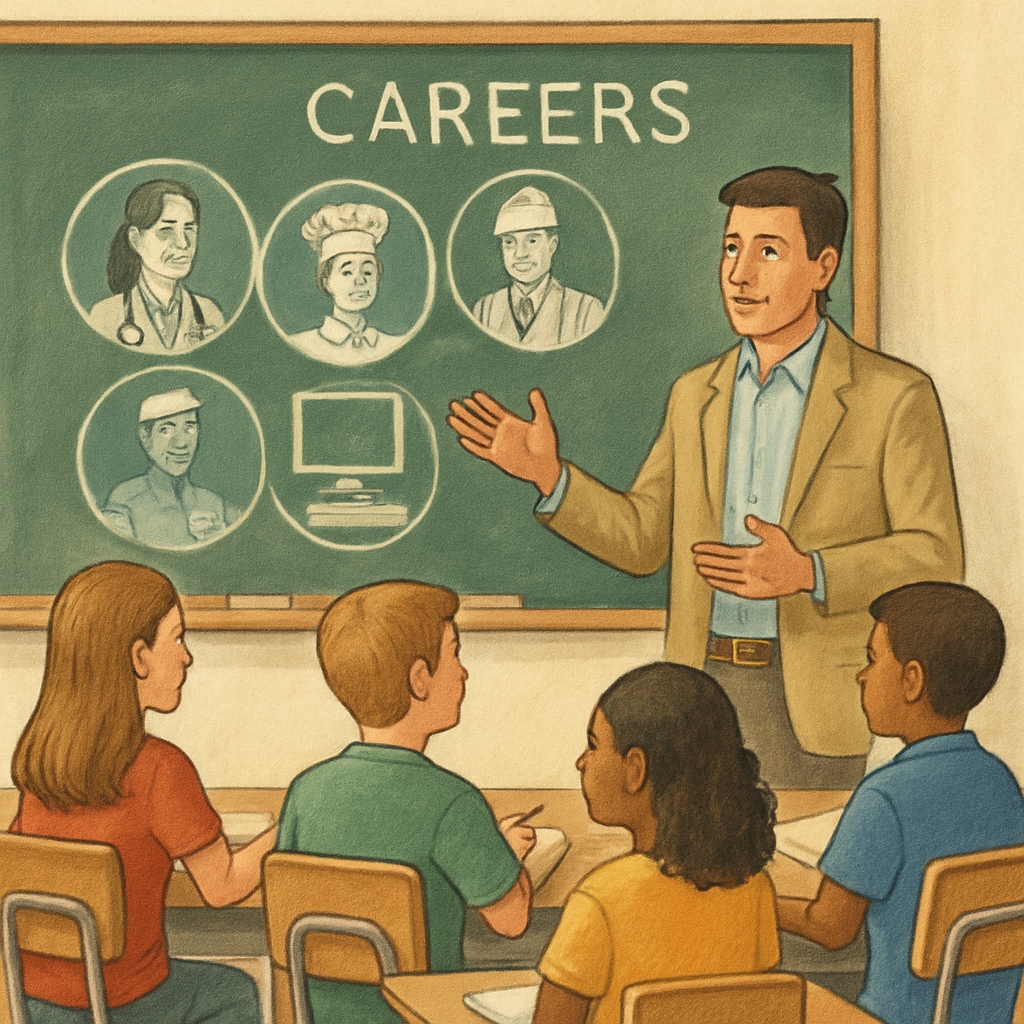In today’s fast-changing job market, students often struggle with the dilemma of pursuing their passions versus choosing a field with strong employment prospects. This challenge, particularly prominent in K12 education, underscores the importance of integrating academic planning, subject selection, and career prospects into early education. By addressing this tension, educators and parents can empower students to align their interests with realistic career opportunities.
The Importance of Early Career Guidance
Early career guidance during K12 education plays a pivotal role in shaping a student’s future. Students often gravitate towards subjects they enjoy, such as art, music, or literature, but may face societal pressure to pursue “practical” fields like engineering or healthcare. This conflict can lead to frustration and even academic disengagement. Therefore, it is crucial to implement structured career guidance programs during this stage.
Effective early guidance can help students:
- Identify their core strengths and interests.
- Understand the job market and emerging career trends.
- Develop critical thinking to balance personal passions with economic realities.

Strategies to Balance Passion and Career Prospects
Balancing passion and career prospects requires a multifaceted approach. Below are some strategies that educators and parents can use to guide students effectively:
- Encourage Self-Reflection: Help students explore their interests and values through personality tests, journaling, or mentorship programs. Tools like the Myers-Briggs Type Indicator or Holland Codes can provide insights into their ideal career paths.
- Expose Students to Real-World Careers: Organize career fairs, industry visits, or guest lectures to give students a realistic view of various professions. This exposure can help them make informed decisions.
- Teach Adaptability: Emphasize transferable skills like communication, problem-solving, and collaboration, which are valuable in any career path.
- Promote Dual Goals: Encourage students to pursue a double major or minor, combining their passion with a field that offers financial stability. For example, pairing graphic design with marketing can open versatile career opportunities.
By following these strategies, students can prepare for a future where their academic choices align with both their passions and practical needs.

Challenges in Implementing Comprehensive Career Guidance
Despite its benefits, implementing effective career guidance in K12 education comes with challenges. Limited resources, lack of trained career counselors, and rigid academic curriculums often hinder progress. Additionally, societal stereotypes about certain professions can restrict a student’s perception of viable career options.
To overcome these challenges, schools and policymakers must:
- Invest in career counseling programs and train educators to facilitate them effectively.
- Integrate career planning into the curriculum as a mandatory subject.
- Collaborate with industries to provide hands-on internships or shadowing opportunities for students.
Conclusion: Fostering a Balanced Perspective
Finding the balance between academic interests and career prospects is a nuanced process that requires early intervention. By integrating robust career planning frameworks into K12 education, students can navigate this complex landscape with confidence. While passion is essential for personal fulfillment, understanding and adapting to the realities of the job market ensures long-term success. With the right support, students can achieve a harmonious blend of both.
Readability guidance: This article uses short paragraphs and bullet points to summarize critical ideas. To enhance engagement, transition words like “therefore,” “in addition,” and “however” are distributed throughout the text. Images are strategically placed to visually complement the content.


